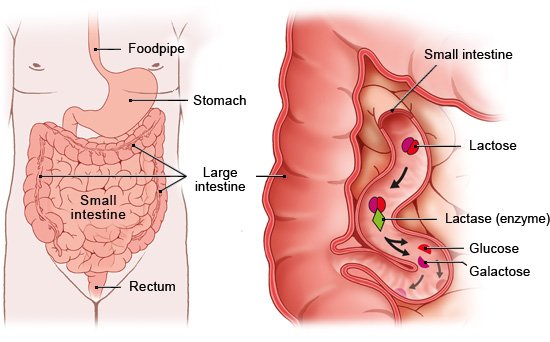Halpert A, Drossman DA. Irritable bowel syndrome. In: McDonald J, Burroughs AK, Feagan BG (Ed). Evidence-based Gastroenterology and Child Health. Oxford: Blackwell Publishing; 2004. P. 265-283.
Ledochowski M, Bair H, Fuchs D. Laktoseintoleranz. Ernährungsmed 2003; 5(1): 7-14.
Marklund B, Ahlstedt S, Nordstrom G. Food hypersensitivity and quality of life. Curr Opin Allergy Clin Immunol 2007; 7(3): 279-287.
Marton A, Xue X, Szilagyi A. Meta-analysis: the diagnostic accuracy of lactose breath hydrogen or lactose tolerance tests for predicting the North European lactase polymorphism C/T-13910. Aliment Pharmacol Ther 2012; 35(4): 429-440.
Misselwitz B, Pohl D, Fruhauf H et al. Lactose malabsorption and intolerance: pathogenesis, diagnosis and treatment. United European Gastroenterol J 2013; 1(3): 151-159.
Sahi T. Genetics and epidemiology of adult-type hypolactasia with emphasis on the situation in Europe. Scand J Nutr Näringsforskning 2001; 45(1): 161-162.
Shaukat A, Levitt MD, Taylor BC et al. Systematic review: effective management strategies for lactose intolerance. Ann Intern Med 2010; 152(12): 797-803.
Wilt TJ, Shaukat A, Shamliyan T et al. Lactose intolerance and health. Evid Rep Technol Assess (Full Rep) 2010; (192): 1-410.
IQWiG health information is written with the aim of helping people understand the advantages and disadvantages of the main treatment options and health care services.
Because IQWiG is a German institute, some of the information provided here is specific to the German health care system. The suitability of any of the described options in an individual case can be determined by talking to a doctor. informedhealth.org can provide support for talks with doctors and other medical professionals, but cannot replace them. We do not offer individual consultations.
Our information is based on the results of good-quality studies. It is written by a team of health care professionals, scientists and editors, and reviewed by external experts. You can find a detailed description of how our health information is produced and updated in our methods.



